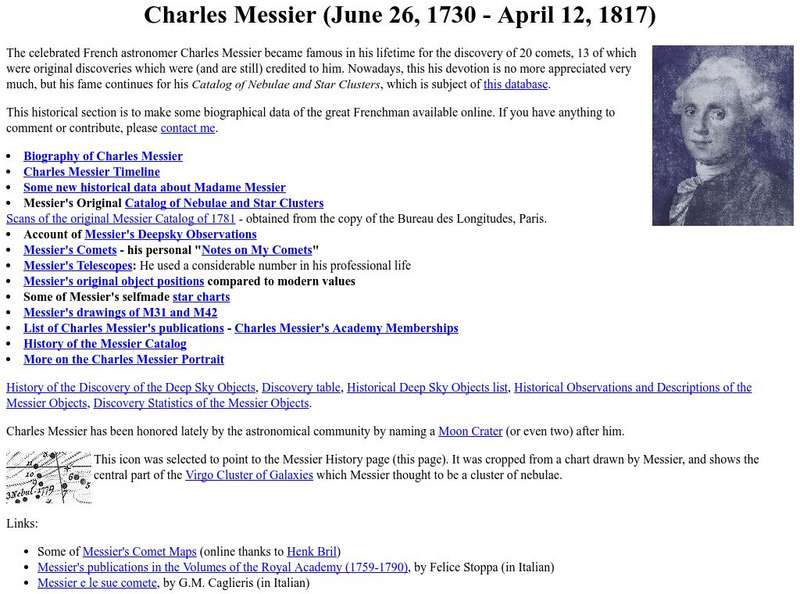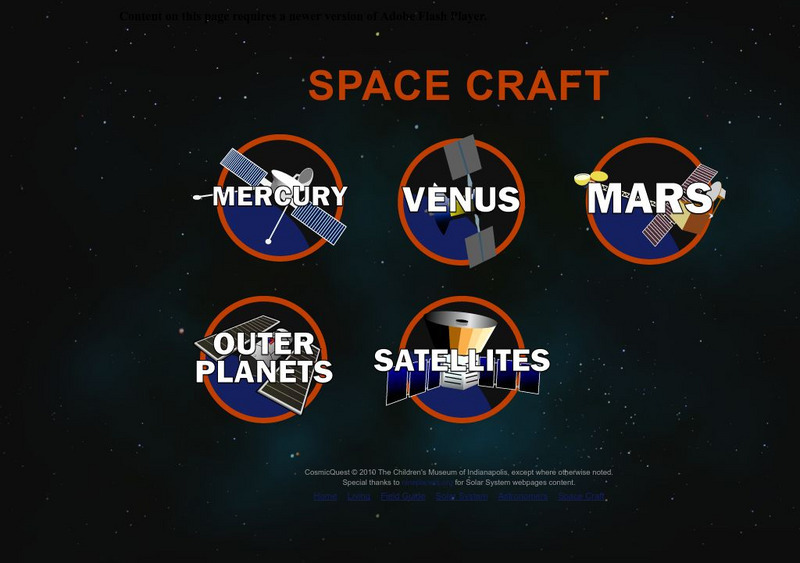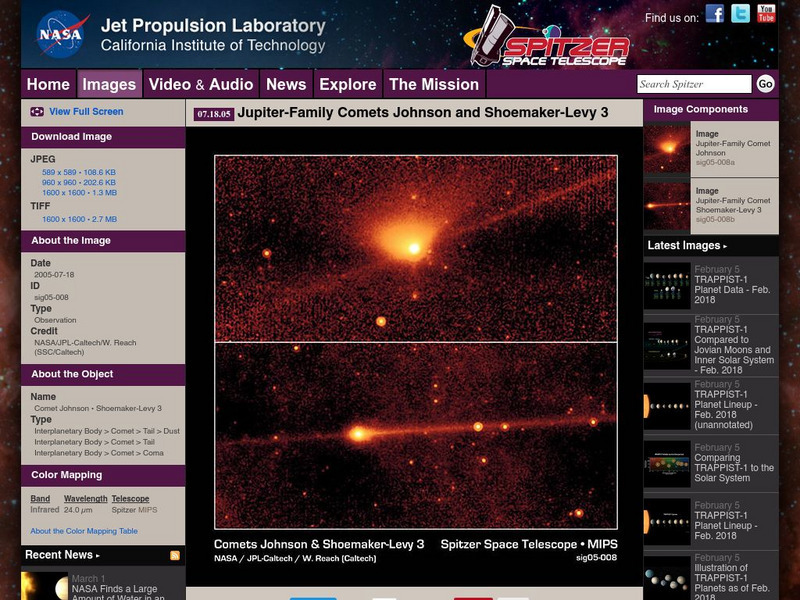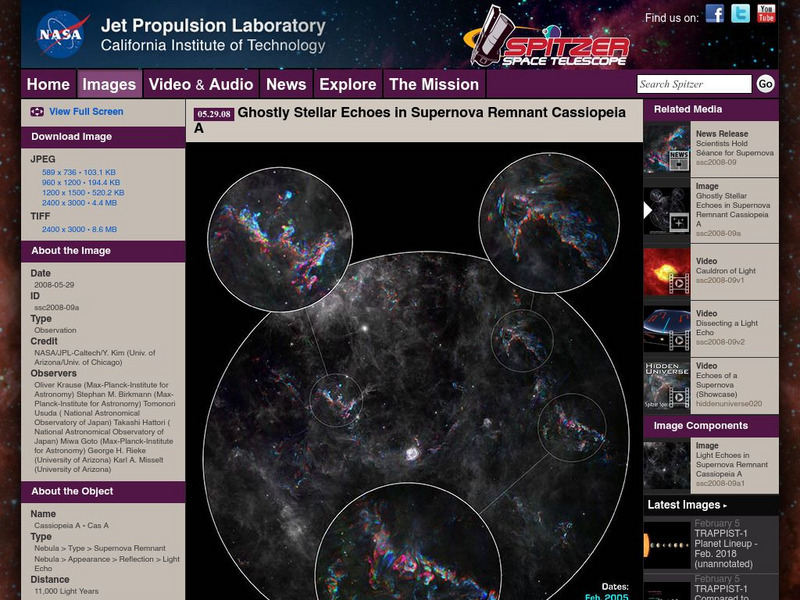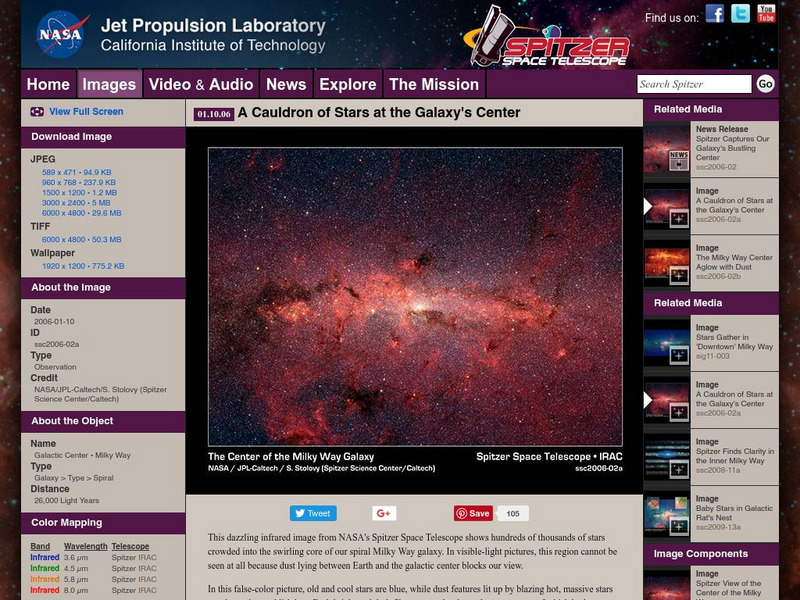Other
Seds Usa: Charles Messier
Charles Messier (1730-1817 CE) is credited for discovering 13 comets. He also began the Catalog of Nebulae and Star Clusters. This catalog as well as a great deal of information on Messier is available here. The Messier objects are also...
Children's Museum
Field Guide to the Universe: Space Craft
Pictures and descriptions of the robot spacecraft that have explored the planets and outer space since the 1960s.
Walter Fendt
Walter Fendt: Apps Zur Physik
This site, in German, offers numerous apps that illustrate common physics principles. Apps are organized into categories: mechanics, oscillations and waves, electrodynamics, optics, thermodynamics, the theory of relativity, physics of...
National Museum of Science and Industry (UK)
Ingenious: Optics Images
This series of images is a combined collection of over three museums' collections of optics images. The images are sorted by pages with about nine images per page and over ten pages.
PBS
Pbs: People and Discoveries: Edwin Hubble
Part of the PBS website, an article documenting the life and work of Edwin Hubble.
CK-12 Foundation
Ck 12: Physical Science: Optical Instruments
[Free Registration/Login may be required to access all resource tools.] What optics are and different types, and how they work and form images.
CK-12 Foundation
Ck 12: Earth Science: Study of Space by the Electromagnetic Spectrum
[Free Registration/Login may be required to access all resource tools.] Overview of the electromagnetic spectrum.
NASA
Nasa Space Place: Amazing Facts
This site from the National Aeronautics and Space Administration asks the question, how can you hit a soccer goal on the Moon from Earth? Find an answer to this question as well as many more answered by Dr. Marc.
Space Telescope Science Institute
Hubblesite: Movie of Neptune's Rotation and Weather
This site from Hubblesite provides information on the Hubble Telescope. NASA's Hubble Space Telescope has been used to assemble a time-lapse color movie showing a full 16-hour rotation of the distant planet, Neptune.
Australian Broadcasting Corporation
Australian Broadcasting Corporation: News in Science: Galaxy Spinning the Wrong Way
From ABC News in Science, this February 2002 article revolves around findings posted by images from the Hubble Space Telescope which suggest a spiral galaxy spinning in an opposite direction than expected.
California Institute of Technology
Spitzer Science Center: Ring of Stellar Death
The Ring of Stellar Death captured in this space telescope image features a dying star expelling what appears to be clumpy rings of material, but turns out to be part of a planetary nebula. In addition, a detailed textual overview...
California Institute of Technology
Spitzer Science Center: Milky Way Aglow With Dust
This space telescope image titled "The Milky Way Center Aglow with Dust" features five separate images of the galaxy's center through infrared eyes. In addition, a detailed textual overview explains various specifics of the picture.
California Institute of Technology
Spitzer Science Center: Ring Beholds a Delicate Flower
The Ring Nebula, also known as Messier Object 57, is a dense, star-forming region captured in this space telescope image. In addition, a detailed textual overview explains various specifics of the picture.
California Institute of Technology
Spitzer Science Center: New Views of a Familiar Beauty
The Trifid Nebula, featured in this space telescope image, is seen from four different views. In addition, a detailed textual overview explains various specifics of the picture.
California Institute of Technology
Spitzer Science Center: Jupiter Family Comets
This space telescope image of the Jupiter-Family Comets features both the Johnson and the Shoemaker-Levy 3. In addition, a detailed textual overview explains various specifics of the picture.
California Institute of Technology
Spitzer Science Center: Image of the Tarantula Nebula
The Tarantula Nebula, also known as 30 Doradus, is a dense, star-forming region captured in this space telescope image. In addition, a detailed textual overview explains various specifics of the picture.
California Institute of Technology
Spitzer Science Center: Gamma Ray Burst
This space telescope image features a full-blown Gamma-Ray Burst first detected by a team of astronomers led by Peter Garnavich. In addition, a detailed textual overview explains various specifics of the picture.
California Institute of Technology
Spitzer Science Center: Image of an Infrared Echo
The Infrared Echo, featured this space telescope image of the supernova remnant of Cassiopeia A, is created when a star explodes. A detailed textual overview explains various specifics of the picture.
California Institute of Technology
Spitzer Science Center: Double Helix Nebula
The Double Helix Nebula, captured in this space telescope image, features a variety of red giants and red supergiants. In addition, a detailed textual overview explains various specifics of the picture.
California Institute of Technology
Spitzer Science Center: Center of the Milky Way
This space telescope image displays the center of the Milky Way Galaxy and its "A Cauldron of Stars." In addition, a detailed textual overview explains various specifics of the picture.
California Institute of Technology
Nasa: Splendid Splinter
The Splendid Splinter photo is a picture of a spiral galaxy and acts as part of a series of photographs taken from the Spitzer Space Telescope. The picture is accompanied by a textual overview of the Splinter Galaxy with specific...
California Institute of Technology
Nasa: Chaotic Star Birth
The Chaotic Star Birth image is part of a series of photographs taken from the Spitzer Space Telescope. The picture is accompanied by a textual overview of a groups of stars being born with specific attention given to the details of the...
California Institute of Technology
Nasa: Great Observatories Present Rainbow of a Galaxy
The Great Observatories Present Rainbow of a Galaxy image is part of a series of photographs taken from the Spitzer Space Telescope. The picture is accompanied by a brief textual overview outlining specific details in the picture.
TVOntario
Tvo Kids: Explore the Night
Use your magnifying glass, binoculars, and telescope to go night exploring with Tia and learn about the natural world around you.
Other popular searches
- Space Telescopes
- Hubble Telescopes
- Compare Telescopes
- Optical Telescopes
- Reflecting Telescopes
- Making Telescopes
- Space Tools Telescopes
- Telescopes Distant Objects
- Telescopes Handout
- Optical and Radio Telescopes
- Convex Lenses and Telescopes
- Radio Telescopes


